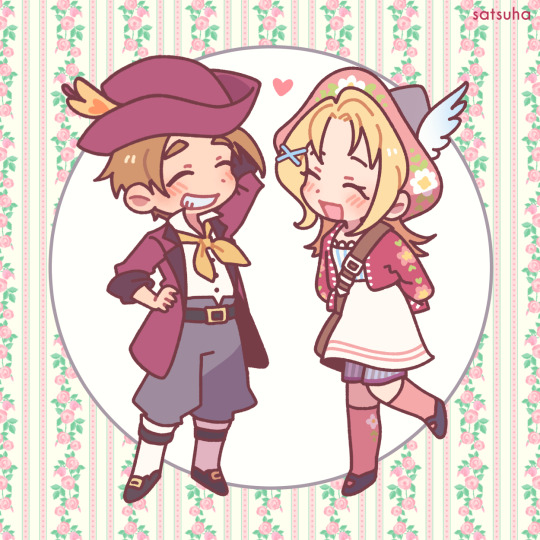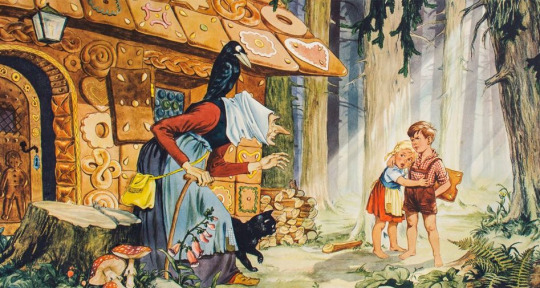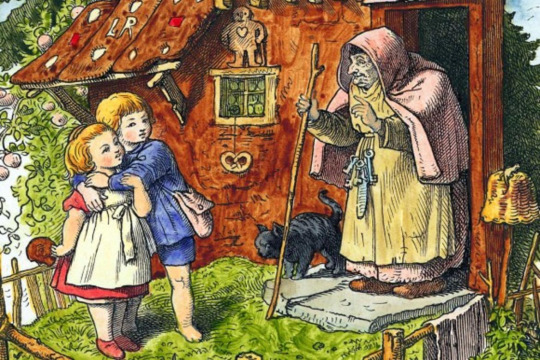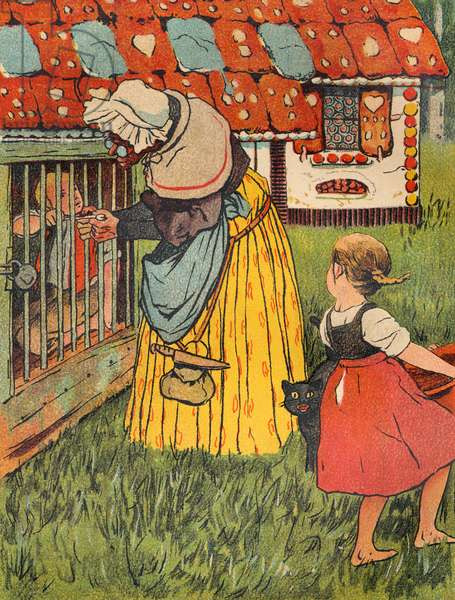#gretel
Explore tagged Tumblr posts
Text

Carl Krenek (Austrian, 1880-1948) - Hansel and Gretel (1913)
1K notes
·
View notes
Text




they don't make movies like this anymore
#hansel & gretel: witch hunters#gemma arterton#zoë bell#gretel#tall witch#hansel and gretel#wilhelm grimm#jacob grimm#prime video#october#halloween
452 notes
·
View notes
Text

i owe it to my 15 year old self to finally draw them together 🪶💕
#satsuhart#harvest moon grand bazaar#story of seasons grand bazaar#dirk#gretel#anita#i heard his jp voice from the official acc post and HEHEE he's so cute....#soo excited to romance dirk for the 5th time or whatever#do these two have a ship name... i couldn't find one#i'm also a little sad the eng localization is most likely not keeping his name as dirk but eh...#i'm still so excited for august
158 notes
·
View notes
Text

Ughhhh who has disturbed by Strawberry Slumber?
3K notes
·
View notes
Text




GRETEL 𖬺 HANSEL (2020)
ㅡ dir. Osgood Perkins
#gretel & hansel#gretel and hansel 2020#sophia lillis#gretel#osgood perkins#horroredit#horrorgifs#filmedit#filmgifs#moviegifs#movieedit#cinemagifs#dailyflicks#horror film#useranna3
56 notes
·
View notes
Text

Press the A button to stand!
47 notes
·
View notes
Text

Gretel by Cedric Poulat
128 notes
·
View notes
Text
Why was Hansel the meal of the witch?
This is a question I was aked recently, and I thought it would make a good subject for a post. "Why did the witch only try to fatten up and eat Hansel? Why didn't she imprison and fattened up Gretel too? Why did she choose to make Gretel her slave instead of Hansel?"
Which is actually a fascinating question. Now, I do not promise that there is some grand truth or secret meaning behind this. It is just a little detail and some technical workings of fairytales. But it is a point that many authors and rewriters have taken an interest upon, and that if a true well of reinterpretations.
So let's go... Why was Hansel the meal, and Gretel the slave?

If we go by the "canon" of the text (of course "canonical" fairytales do not exist, this is just an expression) - if we go by the Brothers Grimm's text, we... well we do not know. It is not specified anywhere why the witch decides to lock up and fatten up Hansel out of the siblings, and to not do the same thing for Gretel. There is no reason explicitely spelled out or given. Maybe she simply prefers the meat of boys over the one of girls? This absence of justification, and the apparent "randomness" of the choice opens a door for authors who would like to change things: for example in "A Tale Dark and Grimm" (the book, not the Netflix series), it is both Hansel and Gretel that are fattened up by the witch, and she only picks Hansel as the first one to be roasted. The Looney Tunes Hansel and Gretel also were both in the cooking pot of the witch Hazel...
The text only leaves implications for the reader. For example, the need for the witch to have a slave/assistant to help her with the chores is implied by the facts that she is 1) elderly 2) has a very bad sight and 3) walks with crutches (a very important point). So it is understandable she would require a slave to help her - but then why pick Gretel, and not Hansel? Again, the text does not answer. Many people like to portray Hansel as the oldest child of the duo, and Gretel as a younger sister - this is because Hansel seems to be the strongest, bravest and most intelligent one, as well as with how his name always comes first in the text, Gretel being after him. Maybe the witch chose to eat him first because he was precisely older, and thus there was a more developed body to eat? Even if the siblings are of the same age, we can always imagine the very old and present male/female dichotomy that claims that men's body are naturaly stronger, larger and meatier than women's, who have graceful, slender, lighter bodies. Maybe such a concept is at work, putting forward a mindset where a cannibal witch will always go for boys first as a main course, and girls next as an appetizer...
One possible reading of the story is that the witch only had enough place to lock up ONE child and thus had to make a choice. Maybe there wasn't enough room for two kids in her prison for future meals? This interpretation is supported by the ORIGINAL text of the Grimm's fairytale. In the first edition of the brothers Grimm's fairytales (provided by Jack Zipes), there is an explicit mention of the place Hansel is locked in: it isn't some sort of stable or cage as it would later be described, oh no! It is a chicken coop so small Hansel can BARELY MOVE. It is a really tiny prison, in which he barely fits. Of course, on a practical side, it can help with the whole fattening process since having a child eat rich meals without ever moving is certain to make him plump in no time (just look at these horrible industrial farms and how they lock up animals in tiny cages) ; but this detail actually explained why the witch only placed her efforts on one child, and not two: she obviously had only enough to place to lock up one kid, and had to deal with the other in a different way.
But even if we admit all those implications - that the elderly, handicaped witch needed a help, that she had only enough room to lock up one child, that maybe Hansel as an older boy makes a better meal than Gretel - there are still some strange and bizarre logical holes. For example, the witch beats up and starves and exhausts Gretel. This is the complete opposite of what she does to Hansel, who is pampered and fattened up - does this imply the witch maybe does NOT want to eat Gretel? Or does she really have only enough resources to fatten up one child, and can only afford making Gretel more edible once she is done with Hansel?
Again, mysteries upon mysteries. Fairytales are not created to work on practical details or actual psychological processes - they are stories relying on powerful visuals and ancient motifs and a dream-logic-structure. When we are told that the witch locks up Hansel to fatten him up and eat him, and that Gretel is becoming an abused slave, we just accept it, because it works on a set of powerful visuals, such as the malnurished slave sister cooking and feeding her imprisoned and soon-to-be-killed brother. The idea of the sister being reduced to a tool in the process of killing her own brother is a very powerful one, never explicitly stated, but still present and sometimes used by adaptations. There was this German Hansel and Gretel movie released in 2005 that explicitly played on this: the children were never told by the witch her intentions when she locked up Hansel, and for the first week or so of Gretel being a slave and Hansel fattened up, they were left in the dark concerning the real intentions of their mysterious jailers. This was a stark contrast with many Americanized adaptations that have the witch gloating and explaining her cannibalistic desires to her victims, and which opened the door for some interesting plot points - in this movie's case, Gretel being quite jealous and envious of Hansel's new life of feasting and being kindly treated by the witch when she got all the insults and chores. Of course, when they discover the truth, their mutual feelings reverse as Hansel realizes his seemingly "easier" fate is actually the worst of the two.
Still, the text is left ambiguous and open-ended enough for us to imagine TONS of things. There could be a rewrite of the tale where the witch exclusively eats little boys, and hates little girls. One nterpretation of dark poetry of the tale can be found in Znescope's Gretel mini-series. Despite this mini-series having BIG flaws (the choice of the witch's true identity was... quite bad to be honest), it does have a very interestng and morbid answer to the "Why was Hansel the only one fattened up?" question. It chooses to depict this difference of treatment as a sick and cruel game the witch plays with her preys: Hansel and Gretel are both her prisoners, but she fattens up Hansel while she starves Gretel, to make a contrast between the two, simply out of a perverse amusement. There is one particularly striking image of the two children locked in two cages arranged like a weighing scale, with Hansel's cage going lower as he grows fatter and Gretel's going up as she becomes skeletal... It is a nice visual contrast that has been reused by various artists.

Now, I spoke mainly here of the content of the story and of the text itself. However, as I stated before, we must look beyond the story itself to understand why Hansel was to be the meal, and not Gretel. Or rather we need to look at the fairy tale's structure, on a meta-level.
As I said before, the fairy tale works here on a system of duality. Hansel and Gretel are meant to be a yin and a yang, complementary reflections. The boy and the girl, the brave and the coward, the cunning older brother and the crying little sister. The idea that their fates are "split" into the house of the witch not only furthers the anguish of the characters, who at this point were always together but now find themselves separated, unable to face together the same trials, but also keeps on playing on these visuals and motifs. As I said, there is something that many artists read in the tale, in the opposition between a malnourished Gretel and a feasting Hansel. This is part of the same duality of food and famine present all throughout the tale, such as the woodcutter's famished and poor household, opposed to the witch's house made of sweets and with chests full of pearls. The siblings represent two forms of abuse and evilness enacted by the witch, but in complementary forms: with Gretel the witch becomes a domestic abuser and an enslaver, with Hansel she becomes a jailer and an ogress.
One can also read in this an extension of the typical sexist duality between men and women in these old centuries: the fates the witch forces upon the two children can be caricatures of what each gender is supposed to "do" in such a society. Gretel, like women, is expected to do household chores and to cook for her "man" - here it is caricatured into her becoming a slave, and only helping fattening up her brother like some cattle. In return, Hansel, like a man, is supposed to be well-treated and well-fed, but here the caring wife/mother figure is a monstrous hag who only makes him feast so she could eat him later. In fact, it is quite interesting to see how both siblings are dehumanized and reduced to the status of animals - from Hansel being fattened up in the stables like some pig or chicken, to Gretel being fed leftovers like a dog.
All of that being said, there is another much needed argument that must be made: the answer fo thte question can be easily found in the story's structure. This is the most obvious solving of the problem when you consider it all: the story of Hansel and Gretel relies on the idea that the two children must save each other in turn. There is a balance in the tale, which bears the name of the two protagonists as heroes, but one before the other. During the first part of the tale, it is Hansel who takes the lead and the decisions. He is the cunning hero who tricks his parents, saves his sister from the woods, returns home thanks to his plan. Gretel is only seen being scared, and crying, and not doing anything except follow her brother around. In the second part of the tale, within the witch's house, it is Gretel who becomes the hero. Her brother is "out of the race", locked up away and unable to do anything, and it is Gretel who this time has to trick the deadly parental figure, come up with a clever ruse, and ultimately save her brother from death. This creates a perfect balance between the two characters: Hansel starts out as the hero protecting his useless sister, and then it is Gretel who vanquishes her uselessness to become the hero saving her own, impotent brother. The siblings need each other to survive, and thus save each other in turn. This is how the story works. And this is why Hansel must be the locked-up, fattened-up victim, so that his sister can save him. Else it would have been the story of "Hansel", and not "Hansel and Gretel".

All of that being said, a last point must be made about a final theory. A theory and reading of the tale that has been very prevalent and prominent in recent adaptations of the story.
The recent "Gretel and Hansel" horror movie did it. Before the (X horror movie) also did it. Neil Gaiman's Hansel and Gretel also used this idea. The comics Fables toyed with it in a side-way. And this idea is simple: the witch did not want to eat Gretel, but rather wanted to make her a witch like herself. Gretel wasn't the witch's slave, but unwilling apprentice.
This idea is born of course from a reconsideration of what a "witch" is, and the gender questions attached with the figure of the witch. In the original story, the witch is not a witch in the modern sense of the term, in fact she is a monster that is very clearly an ogress by another name. There is no question of learning how to be a witch, or making deal with dark powers, or anything like that. But when you read the tale with the modern sense of "witch", as a symbol of dark and hostile feminity, as a woman of power, who works against the domination of men, or the tyranny of patriarchy - when you consider all the gender questions surrounding real-life witches and the witch hunts, you see the witch's actions under a different eye. Her not wanting to eat Gretel at first, and making her do her chores, and forcing her to live with her, might hint at the fact she still considers her more "human" or more valuable than her brother, who is nothing but food, a mere cattle. Several of the modern reinventions of the tale, such as those stated above, decide to add the twist that the witch actually wants to shape or make the little girl into her image: from a slave doing the witch's chores, she becomes the witch apprentice, who is by her side in everything she does. Some of those readngs remove the elements of abuse towards Gretel, while others do not forget them. Neil Gaiman's take on the story is especially fascinating as the witch is explicitely described as oscillating between periods of sweetness and kidndness, promising Gretel all of her secrets and great powers, and periods of pure hatred and violence where she just insults and beats up the girl - all of it highlighting either the witch's madness, or a form of senility due to her old age.
But this theme of "Gretel as a future witch" or "Gretel as the witch's apprentice" ties in with another subtext well-hidden in the original text, but that many like to weave upon: Gretel as the "daughter" of the witch. In many of those rewrites and reinterpretations, the witch doesn't just treat Gretel as an apprentice, but as an heir or a replacement daughter. This is no surprise since it is very clear that in the original tale, the witch is the dark side of the mother figure, and an evil doppelganger of the wicked stepmother/mother of the siblings. As such, it makes sense for her to impose an abusive and unconsented motherhood upon Gretel - doesn't her forcing the girl to do all the chores not reminiscent of how famous fairytales stepmothers treat heroines like Cinderella? Such a perverse motherhood was already explicit and obvious in her treatment of Hansel: like a mother she nourishes and feeds Hansel (in fact she succeeds where the wicked stepmother failed), but this is all to devour him, in a ritual of "un-birth", she becomes a death-givers who doesn't expel a child out of her womb, but has it return to her stomach. [This is a very common and usual motif among ogres of fairytales, who are all caricatures of parenthood].
More generally, to have the witch act in such a way actually makes the fairytale more "feminist" somehow, but in a quite perverse way. Because in such a reading, we have a women-dominated world. The true active and powerful characters of the story are beings such as the wicked stepmother and the witch, who command, control and influence the other characters - especially the male ones. The father is a weak puppet who can't stand up to his wife, Hansel is reduced to a fat pig in a cage. Hansel did try to escape the tyranny of the wicked woman, but all he could do was push back his doom, and his plans ultimately failed. Gretel, as a woman herself, is given a special treatment - and in the "apprentice/daughter" interpretation, is "absorbed" by this world of wicked, dominating women. But she actually breaks from it, and kills the one that would have "turned" her - and it is telling and interesting that the only one who can have a true an full success, a definitive victory in this tale is Gretel. Hansel's plans work and save them, but only for a brief time, and his last plan fails dramaticaly, before he gets locked up and "out of the story". Gretel meanwhile, when she gets the courage and intelligence to act, proves herself much more efficient and definitive than her brother, as she puts a true end to the threat other them by killing the witch (and by extension killing the wicked stepmother/mother). This is something Hansel couldn't do - all he could was trck the wicked woman, and nullify her plans, but he could not remove the threat of the death and the hunger.
Anyway, as you can see, despite being a quite superficial and silly question, this fact (or rather absence of facts) opens up a whole jar of various interpretations, readings and themes, and proves the hidden complexity of these apparently "simple" stories.

#hansel and gretel#hansel#gretel#witch#fairytale analysis#the gingerbread house witch#grimm fairytales#german fairytales#hansel and gretel adaptations
443 notes
·
View notes
Text
I beg anyone who listens to Sodikken and has heard Hansel and not Gretel please listen to Gretel it's underrated as hell
My favorite line is "when I say green you think of cheese but in my mind I'm thinking of some fresh tangerines 😸"
It's such a fun song and is equally as heart wretching I dare say

49 notes
·
View notes
Text










Taisho × Alice 10th Anniversary
#otome#otome games#primula#taisho x alice#taisho alice#cinderella#akazukin#red riding hood#kaguya#gretel#shirayuki#snow white#mahoutsukai#wizard#alice#arisu yurika#yurika arisu#ookami#woolfe#alistair
51 notes
·
View notes
Text

32 notes
·
View notes





